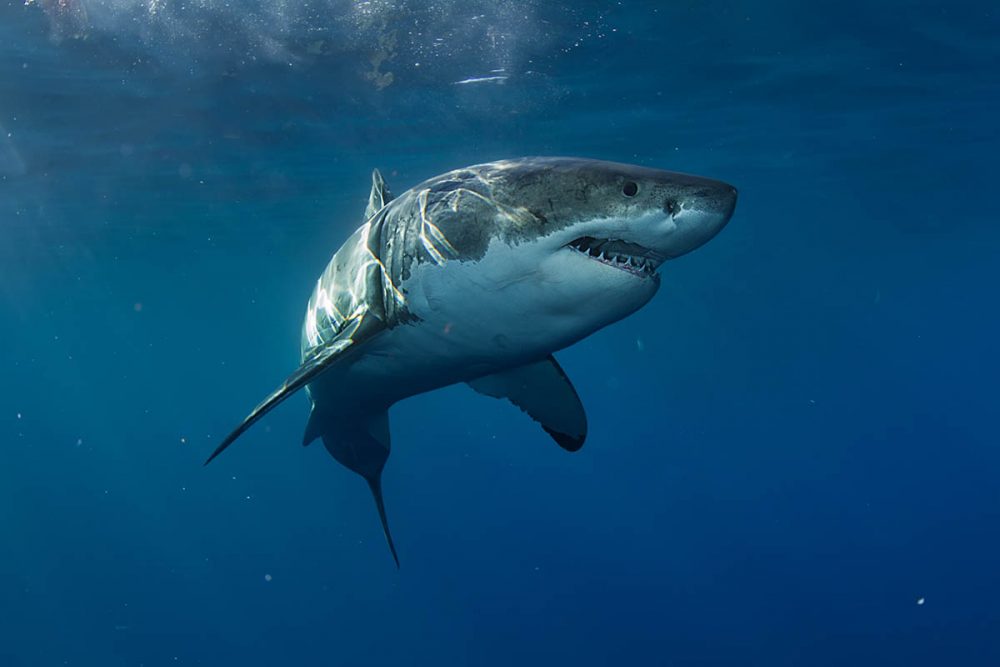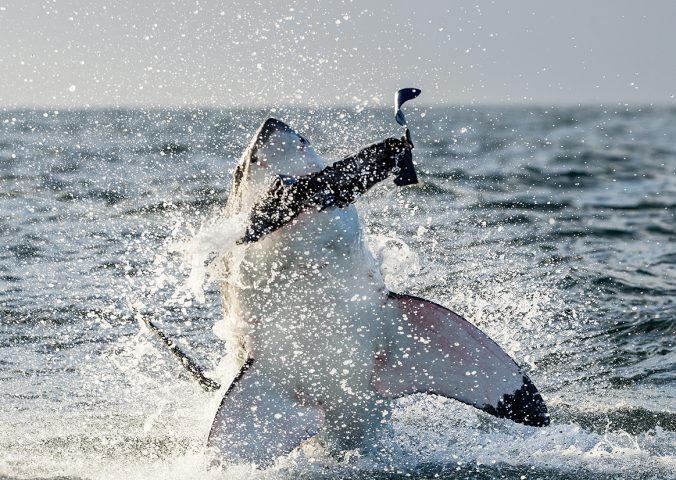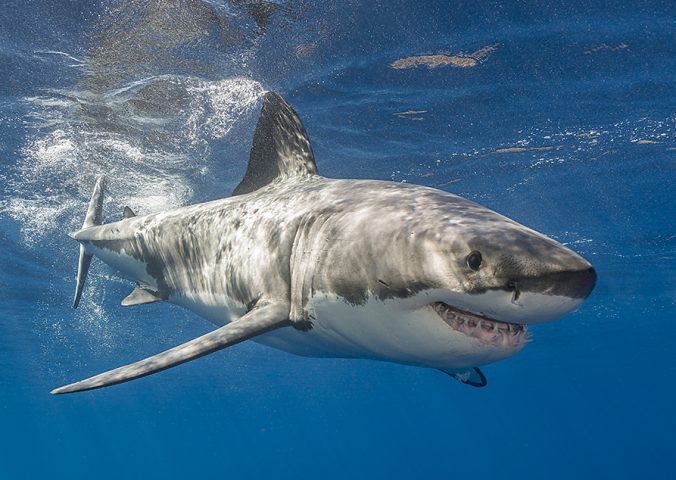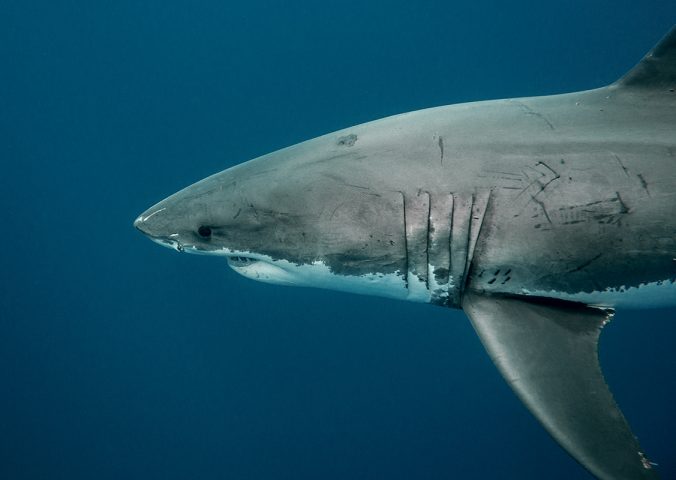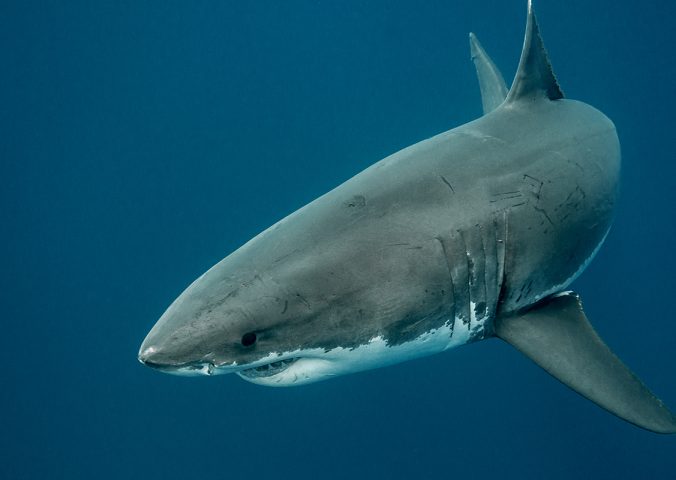About
The great white is perhaps one of the most iconic shark species, gaining notoriety from the 1975 film, “Jaws”. Compared to other species, the great white shark is relatively well studied, however elements of its biology remain a mystery.
It is the only extant species in the genus Carcharodon and scientists believe they can live for up to 30 years and grow to 6.5m. The embryos are oophagous, literally meaning “egg eating”, the embryos feed on eggs produced by the ovary while still inside the mother’s uterus. The embryos are also known to swallow the teeth they shed inside the womb, which experts presume is a means of reabsorbing lost calcium. Litter size is between 2 and 10 pups.
The great white shark often gets negative media attention, fuelled by the occasional human casualty. The dangerous nature of this shark is often exaggerated but has encouraged trophy hunting for their jaws and teeth. They are also susceptible to being caught within beach netting designed to protect humans from accidental encounters. This species does not have a high enough abundance anywhere in its range to withstand sustained exploitation. Their teeth, jaws, and fins can reach huge prices on the Asian fin market; for example, a set of great white jaws can sell for as much as $50,000. As is the case with rhino horns and elephant tusks, this encourages illegal poaching.
This species is protected in parts of its range, such as Australia, South Africa, Namibia, Israel, Malta and the US, but lack of enforcement allows poaching to continue with demand in the black market. Species experts believe that an urgent change of perception of the species is needed to allow for more effective conservation.
- Order: Lamniformes
- Family: Lamnidae
- Population: Unknown
- Trend: unknown
- Size: Up to 6.5m (?)
- Weight: Up to 1,100 kg
- Depth Range (m): Up to 1,200m
EDGE Score
Distribution
The great white shark is globally distributed in temperate and tropical seas. It is more abundant in South Africa, Northern Australia and Chile.
Habitat and Ecology
The great white shark is found from the coastal surface waters down to depths of 1,200m on the continental slope. This species is known to migrate vast distances and has been tracked migrating from South Africa to Australasia and from California to Hawaii! Some individuals have been sighted near coral reefs in Mozambique as well as coasts of the Caribbean.
Great white sharks are apex predators. They are known to have a very varied diet, including fish, other sharks and rays, sea turtles, molluscs, crustaceans, whales and dolphins, seals and even, occasionally, seabirds. Great white sharks also have the rare ability to warm their blood above that of the surrounding sea water, enabling them to expand their range into cooler waters, such as the Atlantic coasts of Europe and the United States.
